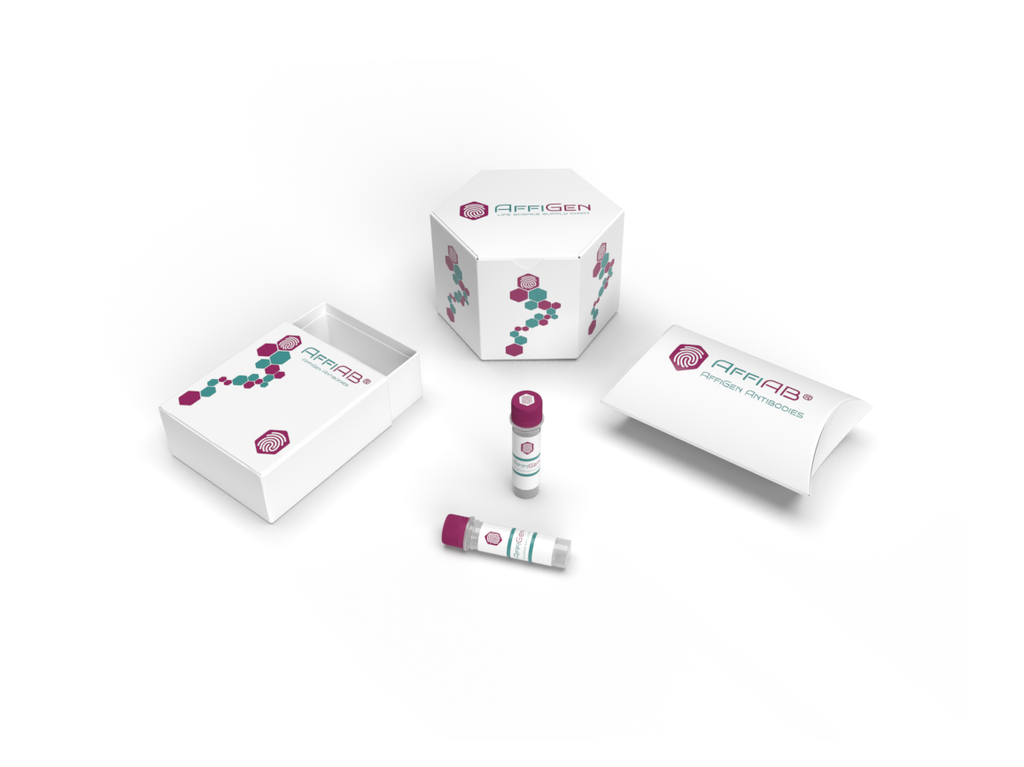AffiAB® Anti-PIP5K1A Antibody
Catalyzes the phosphorylation of phosphatidylinositol 4-phosphate (PtdIns4P) to form phosphatidylinositol 4, 5-bisphosphate (PtdIns (4, 5) P2) . PtdIns (4, 5) P2 is involved in a variety of cellular processes and is the substrate to form phosphatidylinositol 3, 4, 5-trisphosphate (PtdIns (3, 4, 5) P3) , another second messenger. The majority of PtdIns (4, 5) P2 is thought to occur via type I phosphatidylinositol 4-phosphate 5-kinases given the abundance of PtdIns4P. Participates in a variety of cellular processes such as actin cytoskeleton organization, cell adhesion, migration and phagocytosis. Required for membrane ruffling formation, actin organization and focal adhesion formation during directional cell migration by controlling integrin-induced translocation of RAC1 to the plasma membrane. Together with PIP5K1C is required for phagocytosis, but they regulate different types of actin remodeling at sequential steps. Promotes particle ingestion by activating WAS that induces Arp2/3 dependent actin polymerization at the nascent phagocytic cup. Together with PIP5K1B is required after stimulation of G-protein coupled receptors for stable platelet adhesion. Plays a role during calcium-induced keratinocyte differentiation. Recruited to the plasma membrane by the E-cadherin/beta-catenin complex where it provides the substrate PtdIns (4, 5) P2 for the production of PtdIns (3, 4, 5) P3, diacylglycerol and inositol 1, 4, 5-trisphosphate that mobilize internal calcium and drive keratinocyte differentiation. Together with PIP5K1C have a role during embryogenesis. Functions also in the nucleus where acts as an activator of TUT1 adenylyltransferase activity in nuclear speckles, thereby regulating mRNA polyadenylation of a select set of mRNAs. Positively regulates insulin-induced translocation of SLC2A4 to the cell membrane in adipocytes (By similarity) .
Antibody type
Rabbit polyclonal Antibody
Uniprot ID
SwissProt: Q99755 Human; SwissProt: P70182 Mouse; SwissProt: D3ZSI8 Rat
Recombinant
NO
Conjugation
Non-conjugated
Host
Rabbit
Isotype
IgG
Clone
N/A
KO/KD
N/A
Species reactivity
Human, Mouse, Rat
Tested applications
WB, IHC-P, FC
Predicted species reactivity
N/A
Immunogen
Recombinant protein within human PIP5K1A aa 400-562.
Storage
Store at +4°C after thawing. Aliquot store at -20°C. Avoid repeated freeze / thaw cycles.
Form
Liquid
Storage buffer
1*TBS (pH7.4) , 0.2% BSA, 50% Glycerol. Preservative: 0.05% Sodium Azide.
Concentration
1 mg/mL.
Purity
Immunogen affinity purified.
Signal pathway
N/A
Recommended dilutions
WB: 1:500-1:1, 000
; IHC-P: 1:100-1:500
; FC: 1:500-1:1, 000
Molecular Weight
63 kDa
Subcellular location
Cell membrane, Nucleus, Nucleus speckle, Cytoplasm, ruffle, lamellipodium.
Positive control
293T cell lysate, SiHa cell lysate, SK-Br-3 cell lysate, rat skeletal muscle tissue, human tonsil tissue, human liver tissue, mouse testis tissue, SiHa.
